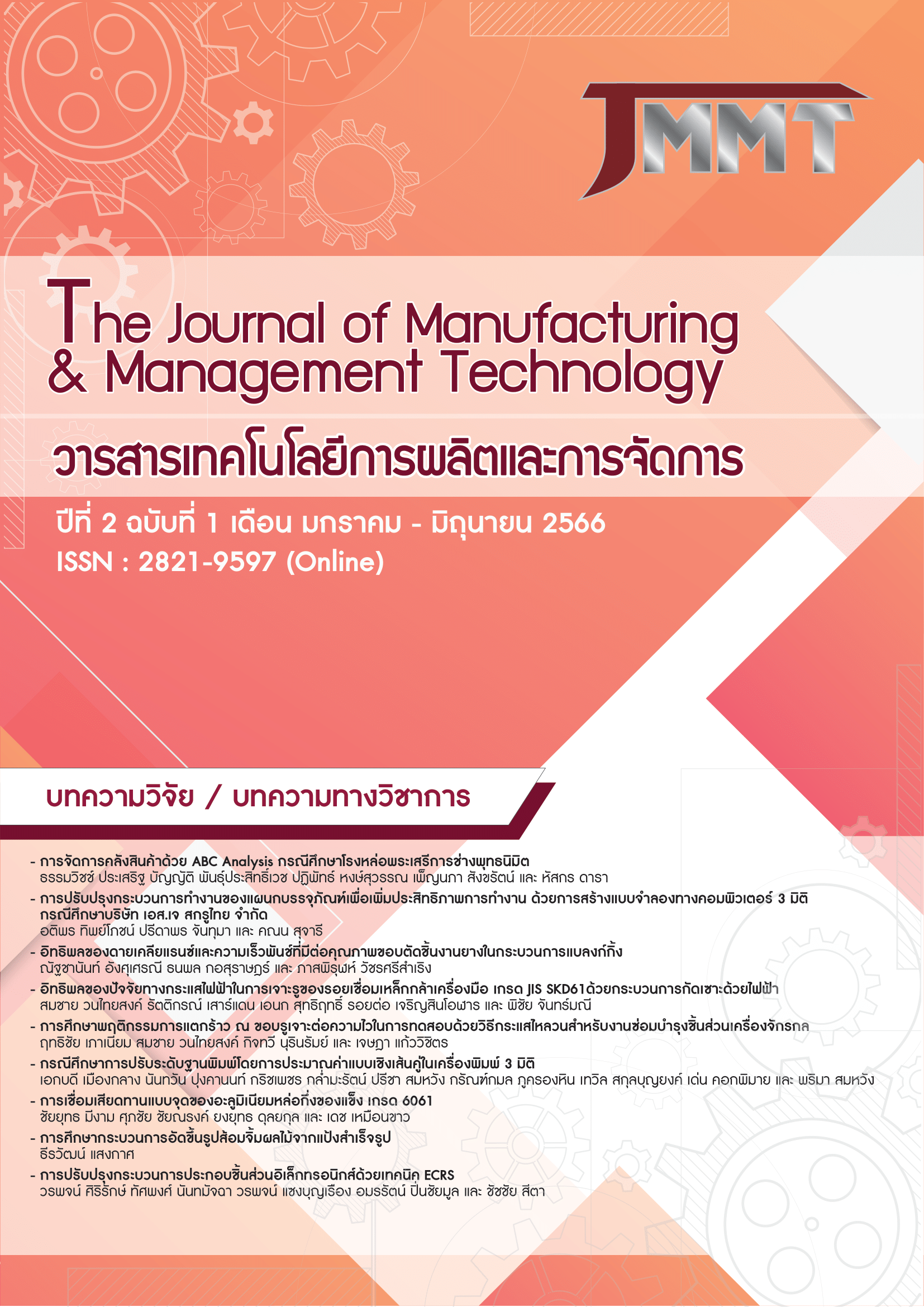Study of Cracking Behavior of a Drilled Hole Edge Crack on ECT Sensitivity for Machinery Component Maintenance
Keywords:
Weld cracking, Eddy-current testing, Crack depth, Residual stressAbstract
The purpose of this research for studying a weld crack, which is adjacent to a drilled hole edge on machinery component maintenance, as well as, inspection sensitivity of eddy current testing. For the weld cracking-drilled hole edge of was constructed using tungsten inert gas welding process (TIG). SKD11 tool steel’s machinery component was employed. The weld characteristic was the spot welding by U-Bending type simulation which was considered the factors affected to cracking in a weld such as residual stress levels of 154 and 220 MPa, and welding times of 3 and 6 seconds. Then, investigating the weld cracking used penetrant testing and eddy-current testing methods. The results were found that the weld cracking occurred obviously in entire experimental conditions. The penetrant testing was used in order to identify the cracking appearance. The weld cracking depth was assessed with eddy-current testing. There was the high tendency of approximately 1.08 mm in depth. Such the cracks were carried out by using the residual stress of 220 MPa, and welding time of 6 second. The eddy-current testing detected the amplitude signal of weld cracks was similar to a reference standard block of welded part.
Downloads
Published
How to Cite
Issue
Section
License
Copyright Notice articles, information, images, etc. was published in this Journal of Manufacturing and Management Technology is a copyright of the Journal of Manufacturing and Management Technology. If any person or deparment wants to bring all or part of it for publish or take any action. Authorization is required in written form from the Journal of Manufacturing and Management Technology only.



